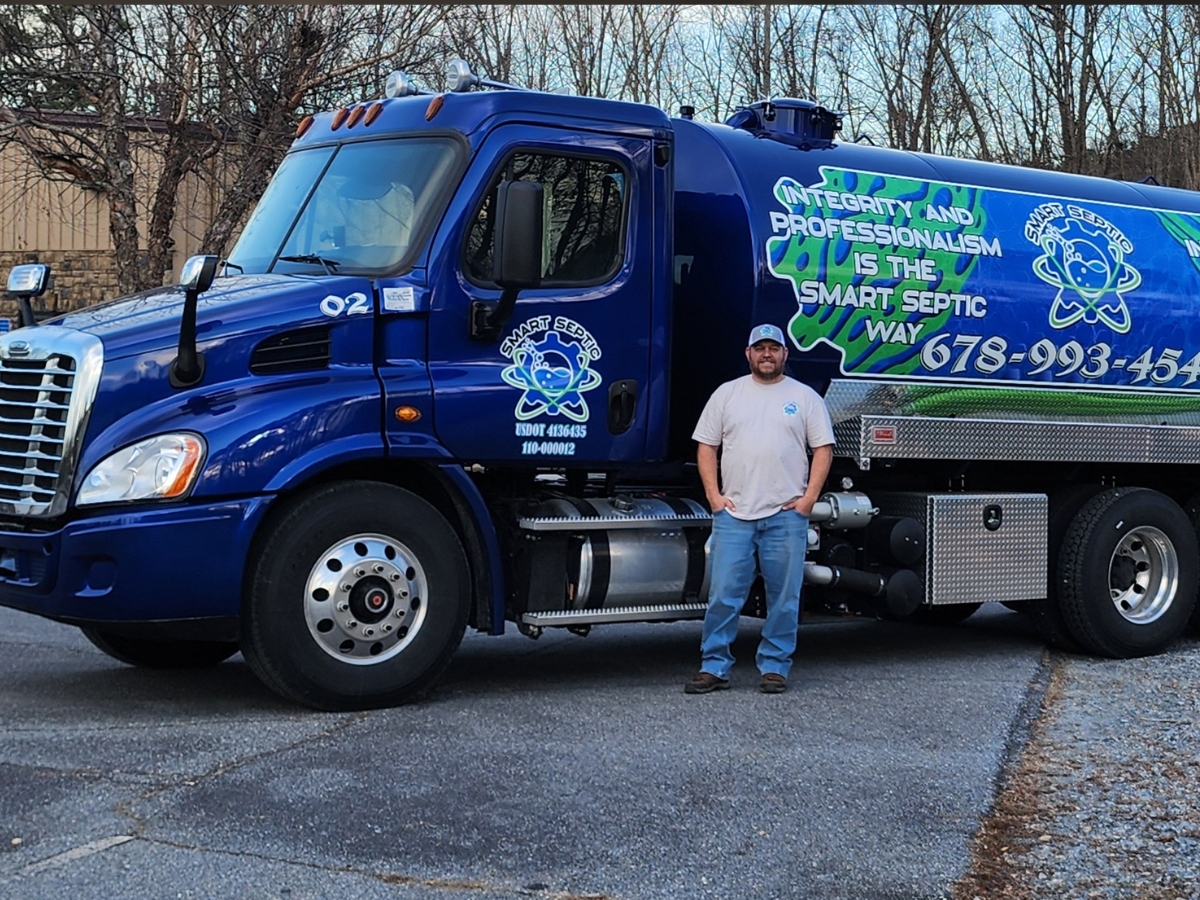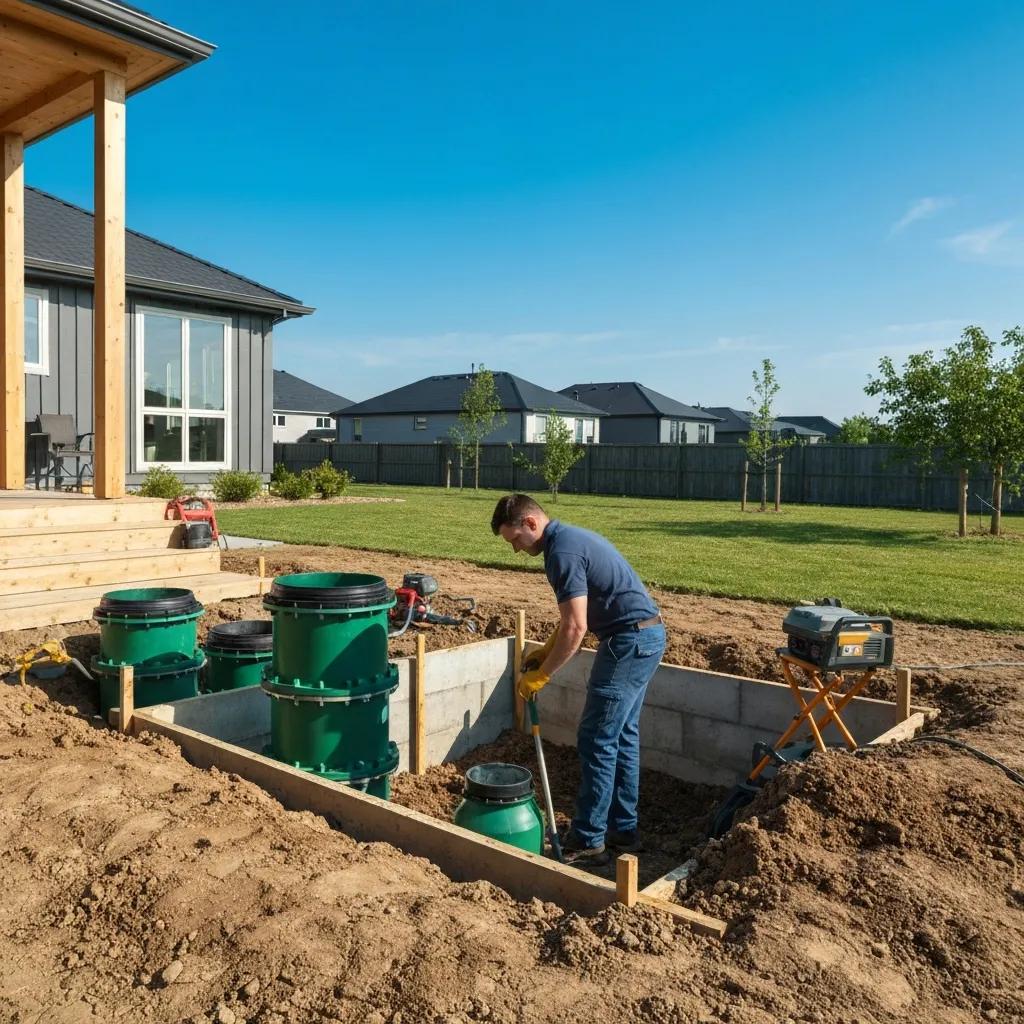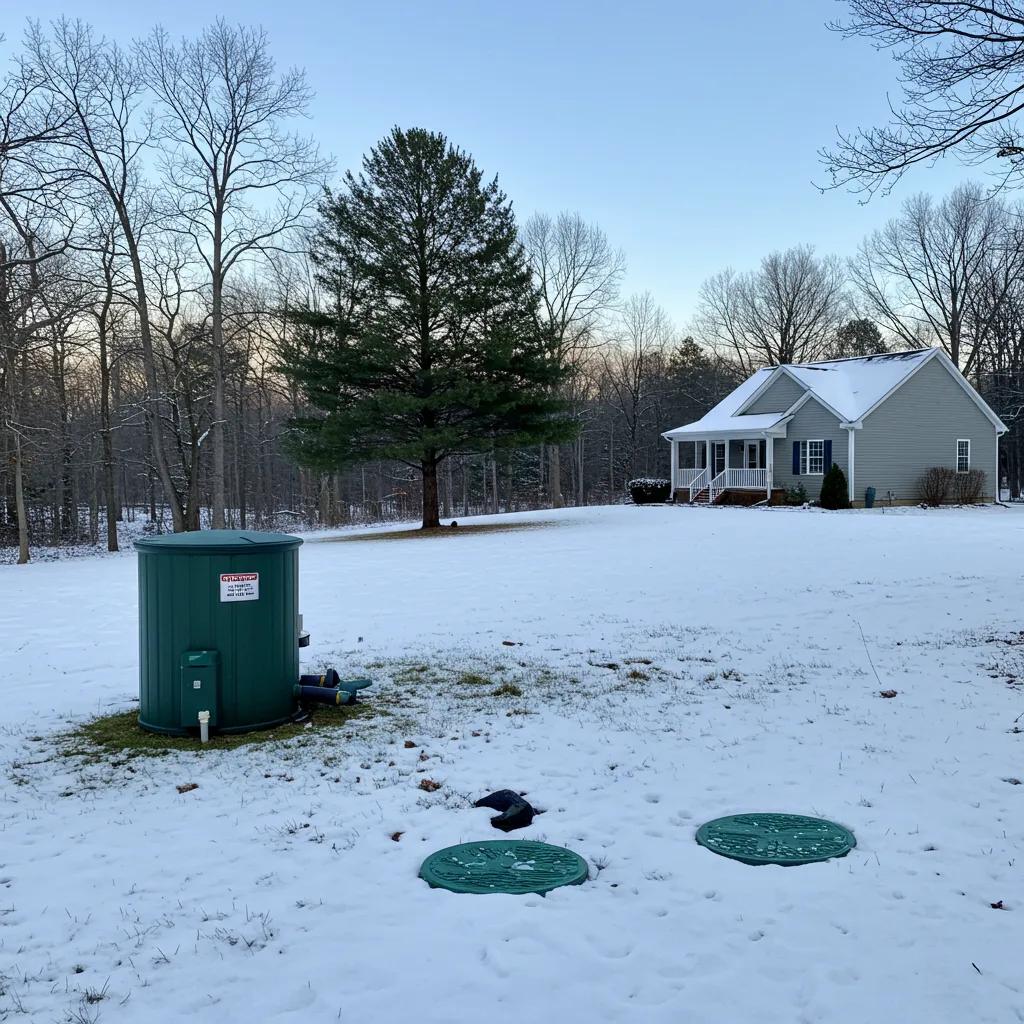When planning a septic system, understanding the important steps can make all the difference. Smart Septic Pros is devoted to guiding homeowners and businesses through the process, from septic tank planning and repairs to inspections and pumping. We know that making informed decisions ensures a smooth and efficient septic system.
Ready to dive into the nitty-gritty of your septic tank planning? Keep reading to learn about local laws, soil tests, and everything else you need to know!
Key Takeaways for Septic Tank Planning

Local Laws and Regulations
Before diving into septic tank planning, it’s vital to understand the local laws and regulations that govern these systems. Identifying relevant environmental regulations will help assess how the water table might impact the installation and operation of a septic system on a specific property. Every locality may have its own set of requirements regarding septic systems, including design, maintenance, and monitoring, so checking for those specifics is crucial.
Additionally, determining the need for septic permits and inspections with a qualified Smart Septic Pros inspector ensures compliance and reduces the risk of costly fines or repairs down the line. Proper planning keeps everything running smoothly and protects the investment in the property.
Identify Relevant Environmental Regulations
Understanding the local environmental regulations is critical when planning for Smart Septic Pros wastewater systems. These rules often address factors like septic tank repairs and how they interact with pipes and groundwater. Failing to grasp these requirements can lead to unexpected fees or complications during installation.
Check for Specific Local Septic System Requirements
Checking for specific local septic tank requirements is a key step in ensuring proper installation and function. Each area will have unique guidelines, including accessibility for maintenance and locations for septic tanks in relation to sanitary sewers. Understanding these septic tank inspections rules helps prevent water pollution issues and allows homeowners to plan for necessary services like pump installation or inspection.
- Understand the local regulations related to septic systems.
- Identify rules regarding accessibility and maintenance.
- Learn about the proximity of septic tanks to sanitary sewers.
- Ensure compliance to minimize water pollution risks.
Determine the Need for Permits and Inspections
Before kicking off any septic system project, it’s important to check whether permits and inspections are required. Many local jurisdictions maintain a database of regulations that detail what septic tank inspections are necessary, especially for installations near drinking water sources or sewerage systems. Ignoring these requirements can lead to significant delays and higher costs, so getting familiar with the necessary paperwork ahead of time will smooth the path to a successful tank installation.
Understanding local laws can make a huge difference in ensuring your septic system runs smoothly. Now, let’s dig into how soil tests play a vital role in your septic health!

Soil Tests
Soil tests play a significant role in septic tank planning. Scheduling a percolation test allows property owners to measure how quickly water can move through the soil, which is vital for understanding the absorption rate. Knowing about the soil composition is equally important, as different types of soil affect how septic systems operate. Those results will serve as a key document to help guide the design of the system, ensuring it meets local policy and regulations.
For areas where water supply is a critical concern, these insights help in making informed decisions that align with environmental safety standards and licensing requirements. Contact Smart Septic Pros for septic tank pumping, septic tank inspections, and septic tank repairs.
Schedule a Percolation Test to Measure Absorption Rate
Scheduling a percolation test is a must for understanding how waste and effluent will be processed in the soil. This test helps determine whether the soil can adequately absorb water, which is crucial for preventing pollutants from reaching surface water. Proper zoning and planning take these results into account, ensuring that any septic system installed functions effectively while protecting the surrounding environment.
Understand Soil Composition and Its Effect on Your Septic System
Understanding soil composition is crucial for the successful operation of a septic system. Different soil types affect how wastewater treatment occurs, impacting both the system’s effectiveness and overall water quality.
Additionally, local regulations often require a septic permit before construction begins, ensuring the chosen site meets the necessary standards for soil absorption and drainage.
- Soil type influences wastewater treatment effectiveness.
- Maintaining water quality is essential for the environment.
- Local regulations dictate the need for a septic permit.
- Proper soil testing aids in successful construction.
Use Soil Test Results to Guide System Design
Soil test results play a crucial role in shaping the design of a septic system, particularly when it comes to ensuring proper sanitation. By understanding how the soil can manage sewage, one can create a system that not only meets regulations but also helps protect local streams from contamination. An effective sewage treatment plan relies heavily on these test findings, as they guide inspectors in evaluating whether the proposed design will function efficiently in the long term.
Once the soil tests are completed, it’s time to explore the different types of septic systems available. Each system has its own unique benefits, making it crucial to find the right fit for your property.
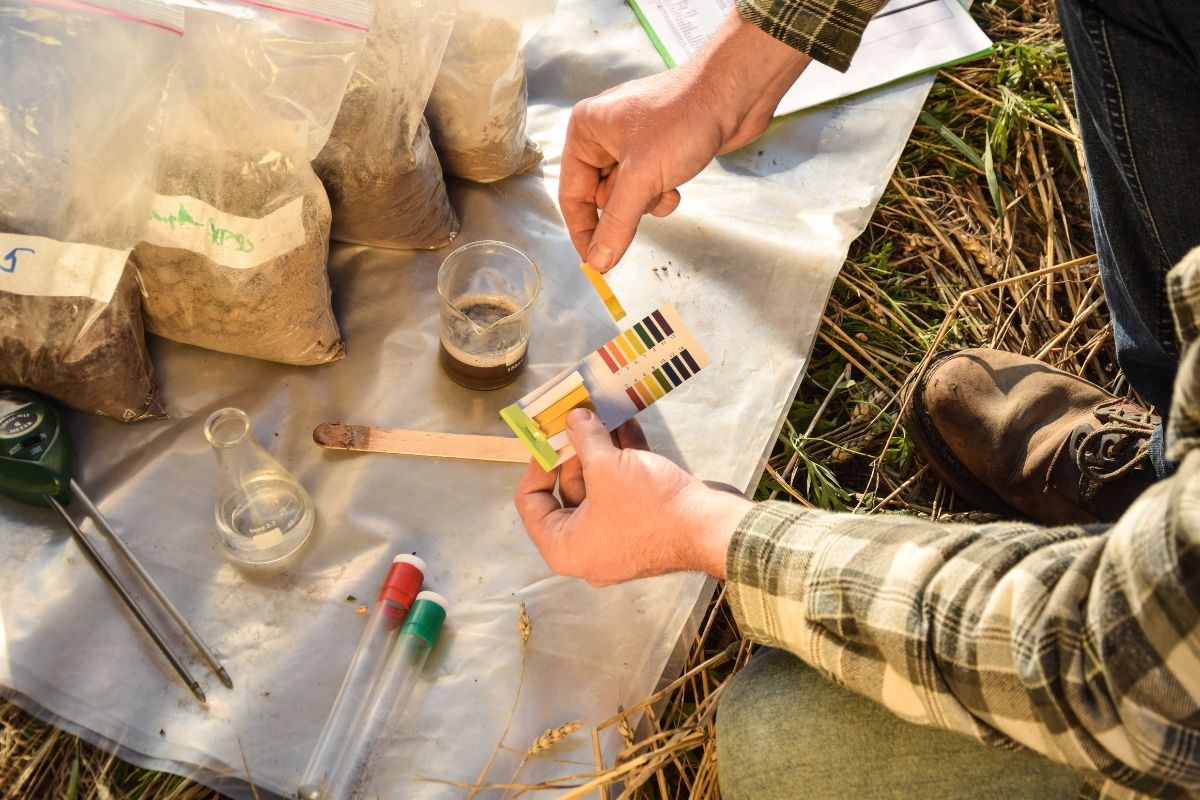
Types of Septic Systems
When it comes to choosing the right septic system, property owners face several options that can significantly impact both their property and the surrounding environment. Understanding the difference between conventional and alternative septic systems is essential. Conventional systems generally work well for properties with suitable soil and space, while alternative systems may provide better solutions in challenging conditions.
Assessing soil properties and available drainage can help determine which system fits best for the lot, while also considering how each system aligns with goals of environmental protection and public health. This knowledge ensures that decisions made will not only benefit the property but also safeguard the overall environmental health of the community.
Compare Conventional vs. Alternative Septic Systems
When property owners evaluate their options for septic systems, they typically weigh the benefits of conventional versus alternative systems. Conventional systems are generally more straightforward and cost-effective when the soil and space conditions are favorable, but they may not be the best fit in complicated environments.
On the other hand, alternative systems can offer innovative solutions that accommodate challenging conditions, ensuring effective wastewater management while protecting the environment.
Assess the Best System Based on Soil and Space
Choosing the right septic system is all about considering the unique soil and space characteristics of the property. A thorough assessment can reveal whether conventional systems can handle the location’s specific conditions or if alternative systems are necessary for effective waste management. Tailoring the septic solution to the property ensures smooth operation and minimizes the risk of environmental impact.
Consider the Environmental Impact of Different Systems
Considering the environmental impact of different septic systems is a fundamental aspect of the planning process. Conventional systems may work well in suitable areas, but they can lead to groundwater contamination if installed in the wrong conditions. Alternative systems often incorporate advanced treatment methods, making them better suited for protecting natural water resources and minimizing pollution risks.
Choosing the right type of septic system is just the beginning. Now, let’s dive into how the size of your septic field plays a crucial role in keeping your system running smoothly!
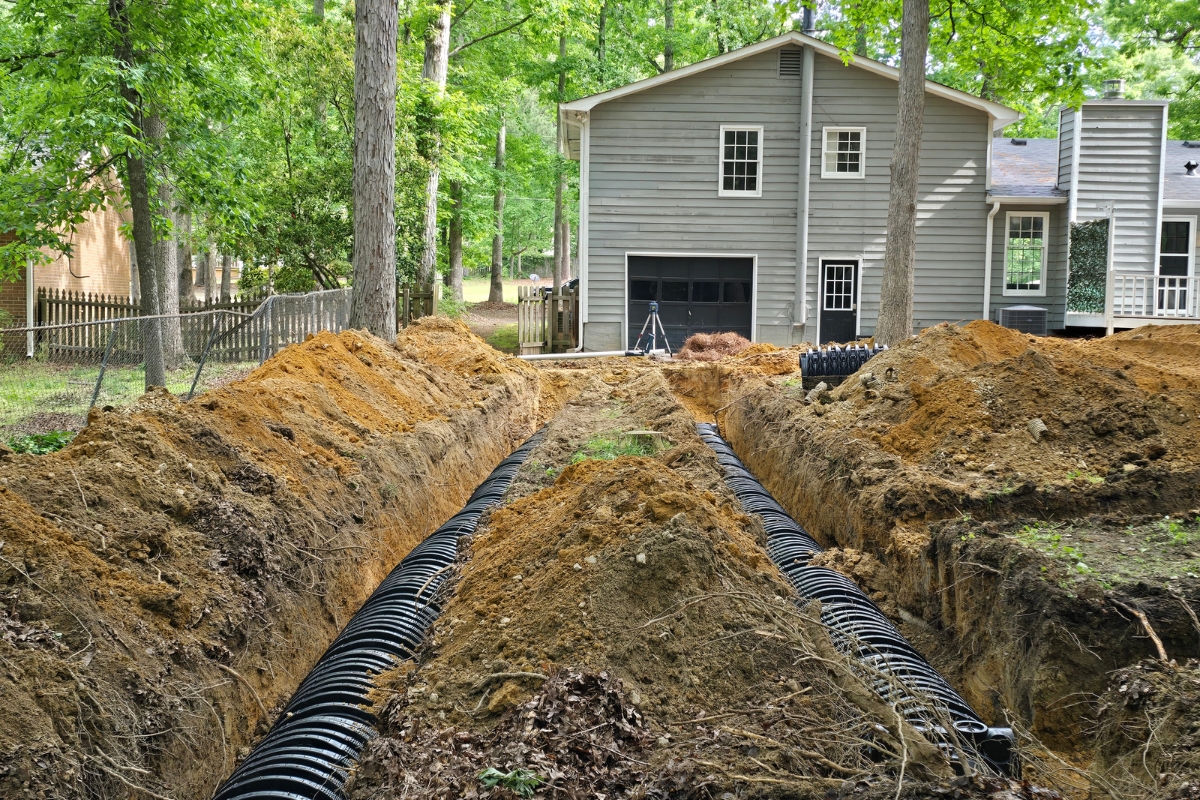
Size of the Septic Field
Determining the size of the septic field is crucial for optimal system performance. Property owners need to calculate the necessary dimensions based on household size and the specific characteristics of the soil, as these factors directly impact how well the system will function.
Once that’s established, planning the layout carefully can enhance both space utilization and efficiency, ensuring the system operates at its best. Additionally, adjusting the plans according to land topography and the depth of the water table can significantly affect the success of the installation, making it essential to consider these elements during the design phase.
Calculate the Necessary Size Based on Household Size and Soil Type
Calculating the correct size for the septic field hinges on the number of people living in the household and the type of soil present. A larger household typically requires a bigger septic field to handle the increased wastewater volume.
Soil type also plays a key role, as different soils have varying absorption rates; clay, for instance, retains water longer compared to sandy soils, which can affect how extensive the septic area needs to be.
Design the Layout to Maximize Space and Efficiency
Designing the septic field layout requires careful consideration to ensure optimal use of space while maintaining efficiency. Taking into account the contours of the land and existing utilities can help create a system that not only fits comfortably but also allows for effective drainage. Ultimately, a well-planned layout enhances the longevity and performance of the septic system.
| Design Consideration | Importance |
|---|---|
| Land contours | Helps with natural drainage and prevents pooling |
| Existing utilities | Avoids interference with other systems and promotes safety |
| Accessibility | Ensures easy maintenance and inspections |
| Space optimization | Maximizes the efficiency of wastewater treatment |
Adjust Plans According to Land Topography and Water Table
Adjusting septic system plans according to land topography and the water table is essential for a functioning system. Understanding the land’s slope and elevation can guide the placement of the septic field, ensuring that water can drain properly. Additionally, recognizing how close the water table is to the surface helps in avoiding potential contamination and makes a seamless installation possible.
| Consideration | Impact on Septic System |
|---|---|
| Land slope | Influences water drainage and system efficiency |
| Elevation | Affects gravity flow for wastewater management |
| Water table depth | Determines suitability and safety of septic installation |
The size of the septic field sets the stage, but it’s the planning of the pipes that truly brings the system to life. Let’s dive into how proper pipe planning can ensure everything flows smoothly!
Plan the Pipes
Planning the pipes for a septic system involves careful consideration to ensure efficient waste transport from the home to the tank and then to the drain field. Mapping out the correct route is essential for minimizing potential problems down the line. Choosing the right materials will also make a significant difference; using appropriate piping and maintaining a proper slope can facilitate smooth waste flow.
Additionally, incorporating access points for maintenance and inspection during the design phase will simplify future upkeep, helping to keep the system running well for years to come.
Map Out the Route From Home to Septic Tank to Field
When planning the septic system, laying out the path from the home to the septic tank and then to the drain field is key for a smooth operation. By plotting the route carefully, property owners can avoid obstacles like trees, existing utility lines, or sharp turns that could impede waste flow. T
his thoughtful approach not only helps with effective waste transportation but also reduces potential maintenance issues in the future.
Select the Right Materials and Slope for Efficient Waste Transport
Selecting the right materials for pipes is essential in ensuring that waste is transported effectively. Durable plastic or PVC pipes are commonly used due to their resistance to corrosion and ease of installation. Additionally, maintaining the proper slope of the pipes will promote smooth flow, preventing any blockages or backups in the system.
Achieving the correct slope can make a big difference in how efficiently waste travels through the pipes. A slope of approximately 1/4 inch per foot generally works best, enabling gravity to assist in moving waste downstream. This straightforward yet significant consideration contributes to the overall health and functionality of the septic system:
| Consideration | Impact on System |
|---|---|
| Pipe Material | Influences durability and resistance to blockage |
| Slope | Facilitates waste transport and reduces backups |
| Joint Sealing | Prevents leaks and maintain system integrity |
Include Access Points for Maintenance and Inspection
Incorporating access points into the septic system design facilitates easy maintenance and inspection, which is vital for long-term performance. By strategically placing these points, property owners can efficiently check the system’s status and perform necessary servicing without digging up extensive areas. This proactive approach minimizes potential disruptions and keeps the septic system running smoothly over the years.
Now that the plans for the pipes are set, it’s time to gather everything needed to make the project a success. Let’s dive into the materials that will ensure a smooth installation!
List the Required Materials
Gathering the necessary materials for a septic system is a crucial step that shouldn’t be overlooked. Property owners should begin by cataloging all items needed for tank, field, and pipe installation to avoid any last-minute surprises. It’s important to focus on sourcing high-quality materials that not only meet local regulations but also ensure longevity and durability in the system’s performance.
Budgeting for unexpected material needs during construction can save a lot of headaches later on, as unforeseen issues often arise. Being prepared with a comprehensive list and a flexible budget helps make the installation process smoother and more efficient.

Catalog All Materials Needed for Tank, Field, and Pipe Installation
Cataloging all necessary materials for the septic system installation is a smart approach for any property owner. This list should encompass everything from the septic tank itself to the components of the drain field and piping that will connect everything together. By having a clear outline of required items, homeowners can ensure they have what they need and stay on track throughout the project:
- Septic tank
- Drain field piping
- Soil filter materials
- Access risers
- Gravel or sand for the drain field
- Pipe fittings and connectors
- PVC or HDPE pipe
- Drainage fabric
- Sealing materials
- Permits and documentation
By being proactive and utilizing a septic tank inspection checklist, homeowners can gather necessary materials in advance, avoiding unexpected delays and additional costs, ultimately contributing to a seamless installation process.
Source High-Quality Materials for Longevity
Choosing high-quality materials for a septic system is vital for ensuring longevity and reliability. Property owners should look for durable options that meet or exceed local standards, as this can prevent costly repairs down the road. Investing in well-made components not only enhances the system’s performance but also contributes to peace of mind for years to come.
Budget for Unexpected Material Needs During Construction
Planning for unexpected material needs during septic system construction is a wise strategy for property owners. Costs can easily add up when surprises occur, so setting aside extra funds can alleviate stress and prevent delays in the project timeline.
Being prepared for unanticipated materials makes the installation process smoother. It’s a good idea to keep an estimated budget for any additional items that may be required as the project progresses:
| Potential Unexpected Material Needs | Reason for Inclusion |
|---|---|
| Additional piping | To account for any changes in layout or design |
| Extra gravel or sand | To ensure proper drainage and coverage |
| Soil filter materials | In case existing soil conditions are not suitable |
| Sealing products | For additional waterproofing or repairs needed |
With a flexible budget like this in place, property owners can maintain control over their septic system projects while ensuring everything stays on track.
With your materials ready, it’s time to take the next big step in your septic journey. Let’s dive into getting those plans approved so you can move forward with confidence!

Get Your Plans Approved
Once the groundwork for the septic system is established, getting plans approved becomes the next step in the process. Property owners must present detailed plans and soil test results to local authorities, ensuring all requirements are met for successful implementation. Scheduling inspections at critical construction phases allows inspectors to monitor progress and catch any issues early on.
Additionally, property owners should be prepared for potential plan revisions based on feedback from authorities, as this can lead to a smoother installation and enhance compliance with regulations.
Submit Detailed Plans and Soil Tests to Local Authorities
Property owners should gather all required documentation, including detailed plans and soil test results, before submitting them to local authorities. This submission is crucial for ensuring compliance with regulations and helps pave the way for a successful installation. By providing complete and accurate information, homeowners can streamline the approval process and avoid unnecessary delays.
Schedule Inspections at Key Construction Phases
Scheduling inspections during key construction phases is essential to ensure everything goes according to plan. These inspections help catch any potential problems early, which can save homeowners from costly mistakes down the road. Keeping communication open with inspectors adds another layer of confidence throughout the process:
- Set inspection dates at critical milestones in construction.
- Confirm compliance with local regulations during each phase.
- Make adjustments based on inspector feedback to enhance approval chances.
Prepare for Plan Revisions Based on Feedback
As property owners submit plans to local authorities, they should be ready for feedback that may require adjustments. Embracing this input can lead to improvements, enhancing both safety and compliance with regulations. A nimble approach to revisions often results in a smoother installation process and a more effective septic system design.
Now that plans are in place, it’s time to take the next step. Hiring an engineer will ensure your project runs smoothly and meets all requirements!

Hire an Engineer for Your Project
Finding the right engineer for a septic system project is a crucial step that sets the stage for success. An engineer with specific experience in septic systems can offer valuable insights to help navigate local regulations and design requirements. Collaborating closely ensures that design plans align well with the unique characteristics of the property.
Plus, having an engineer’s guidance during key construction stages adds an extra layer of assurance, ensuring all aspects are executed properly and efficiently. This partnership not only streamlines the process but also bolsters the overall quality and reliability of the septic system.
Select an Engineer With Specific Septic System Experience
Choosing an engineer with specific septic system experience is key to ensuring a successful project. These professionals bring specialized knowledge about local regulations and the technical aspects of designing a reliable system. Their expertise can make a tremendous difference in navigating the complexities of septic installation, resulting in a system that functions well and meets all necessary standards.
Work Together to Finalize Design Plans
Once the initial ideas are on the table, collaborating with the engineer will help refine those designs into a solid plan. Both parties can share insights based on their expertise and address any concerns, ensuring the final layout is practical and meets all necessary regulations.
This partnership not only enhances communication but also helps align expectations on timelines and material needs. By working together, property owners and engineers can create a reliable septic system design that balances functionality with compliance.
| Step | Description |
|---|---|
| Initial Collaboration | Discuss general ideas and address concerns between engineer and property owner. |
| Detailed Refinement | Refine designs based on feedback and insights, focusing on practicality and compliance. |
| Final Approval | Align on timelines and material needs for the successful implementation of the project. |
Ensure Engineer Oversight During Critical Construction Stages
Having an engineer oversee the installation of a septic system is crucial for ensuring everything goes according to plan. Their hands-on involvement allows for immediate troubleshooting and on-the-spot adjustments, which can save homeowners from facing significant issues later on. With their expertise guiding the construction process, property owners can feel confident that their septic system will function effectively for years to come.

Conclusion
If you’re in need of septic tank planning services in Cartersville, Acworth, Marietta, or the metro Atlanta area, choose Smart Septic Pros. Guiding the septic tank planning process is crucial for ensuring proper installation and long-term functionality. Understanding local regulations, conducting soil tests, and selecting the right system type all contribute to effective wastewater management.
Property owners should actively engage with professionals to streamline approvals and enhance compliance. Taking these steps not only protects their investment but also safeguards the surrounding environment.
